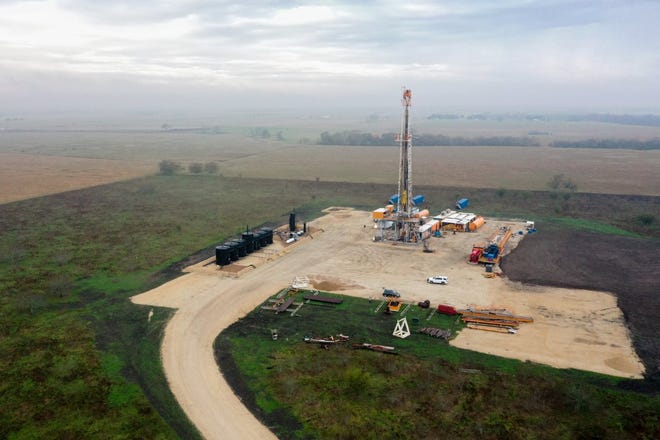
Opinion: Got geothermal? Texas does and ought to tap the resource
It is easy to look back at the recent Texas cold snap and identify the fixes needed in the energy grid. The oil and gas industry will also play a role in addressing the financial impact from COVID-19. Thus, the question becomes: How can we diversify our Texas energy portfolio while providing affordable and reliable heat, electricity and cooling?
One answer: Tap the Texas geothermal resources.
Geothermal energy is always on, rising within the Earth. This baseload, inexhaustible resource is below us everywhere. In fact, every oil and gas well already brings geothermal heat to the surface as a byproduct. During the 1970s and ‘80s, geothermal resources along the Gulf Coast were catalogued and proven extractable. Then initiatives to put geothermal energy to work were shelved when oil prices crashed, delaying diversification.
Since our deep wells already mine geothermal resources, why not capitalize on them? We could extract more fluids, pay royalties and diversify our utilities — all while reducing pollution and improving grid security.
With one of the smallest surface footprints for power sources, geothermal projects are less likely to be disrupted in storms. Geothermal production overlaps and complements other energy supplies. For example, existing hydrocarbon wells can become “geothermal batteries” for energy storage when combined with large-scale solar. The excess heat is kept hot while stored underground in paired geothermal plants, then extracted as needed to meet peak demands for power. This means multiple benefits; local employment is maintained and energy security is guaranteed. Before another state leads, Texas oil and gas fields are an ideal place to demonstrate proof-of-concept, improve the geothermal battery design and capitalize on the product for long-term benefit.
Other opportunities exist for our energy grid to be more resilient by using geothermal heatto increase baseload capacity. Just as there are a wide range of well depths and flow rates, geothermal applications also vary.
Alternative thermal energy opportunities could start from small-scale, on-site power generation from existing lower-temperature oil or gas wells. These wells, with temperatures commonly in excess of 250 degrees, might otherwise be shut-in or abandoned. More ambitiously, large-scale wide diameter, deep wells (10,000-plus feet) are capable of producing megawatts of geothermal electricity for our rural communities and reducing transmission loss.
Repurposing wellbores economically for geothermal projects provide cascading benefits. One example is McAllen’s proposed desalination project, designed to use the heat produced from oil field fluids for sustainable clean water. Another project in East Texas evaluated the use of geothermal fluids to make super chilled water for use at natural gas plants.
For homes and businesses, geothermal heat pumps provide efficient air cooling in addition to heat in the winter. Schools and government facilities already use it to achieve net-zero carbon neutrality. Whisper Valley in Austin is an entire neighborhood on geothermal heat pumps. The benefits include cooling and heating systems that run with less noise and lower electric bills. By installing geothermal heat pumps, we can eliminate 25% to 50% of a building’s energy needs for climate control, which also reduces the strain on the power grid during extreme weather events.
This year we are discussing diversification and security of our utilities looking backwards. Now is the time to look forward, and as legislative debates heat up, let’s make sure geothermal energy is included with the passing of House Bill 3576 for project funding to assist our entire Texas energy industry in becoming the world leader in using geothermal resources in sedimentary basins. The heat is on Texans to succeed.
Richards is the Geothermal Lab coordinator at Southern Methodist University in Dallas. Her collaborators on this commentary are: Robert Gregory, SMU Earth Sciences department chair; John Holbrook, geology professor at Texas Christian University; and John McLennan, professor of chemical engineering at the University of Utah.
[Source: Auston American Statesman]

